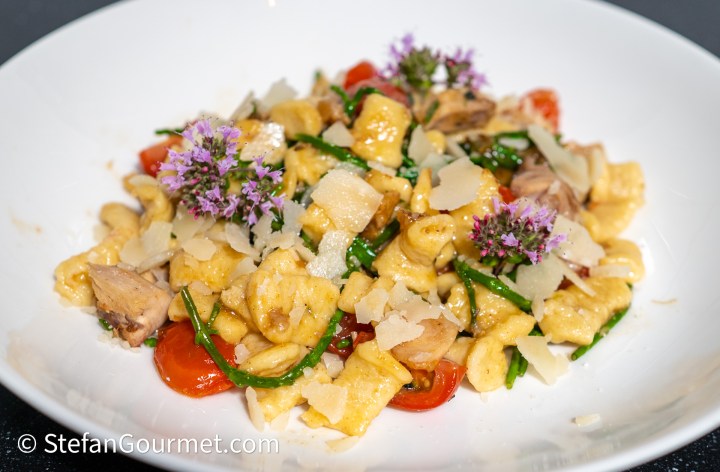
As part of our wine tour through Friuli, we had dinner at La Subida Trattoria al Cacciatore. The chef’s specialty is girini—his interpretation of a traditional local dish made by letting pasta batter drip into boiling water to form fresh pasta.
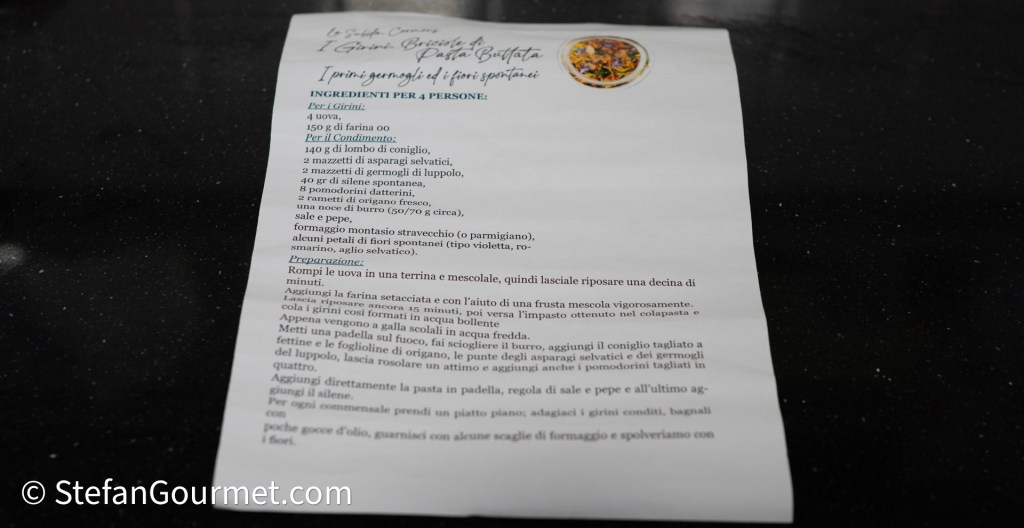
What the girini are served with depends on the season. Since we visited in spring, they were accompanied by rabbit, wild greens gathered from blooming fields, and cherry tomatoes. The recipe was provided with the dish. I wonder how many guests actually attempt to recreate it at home. Naturally, I did.
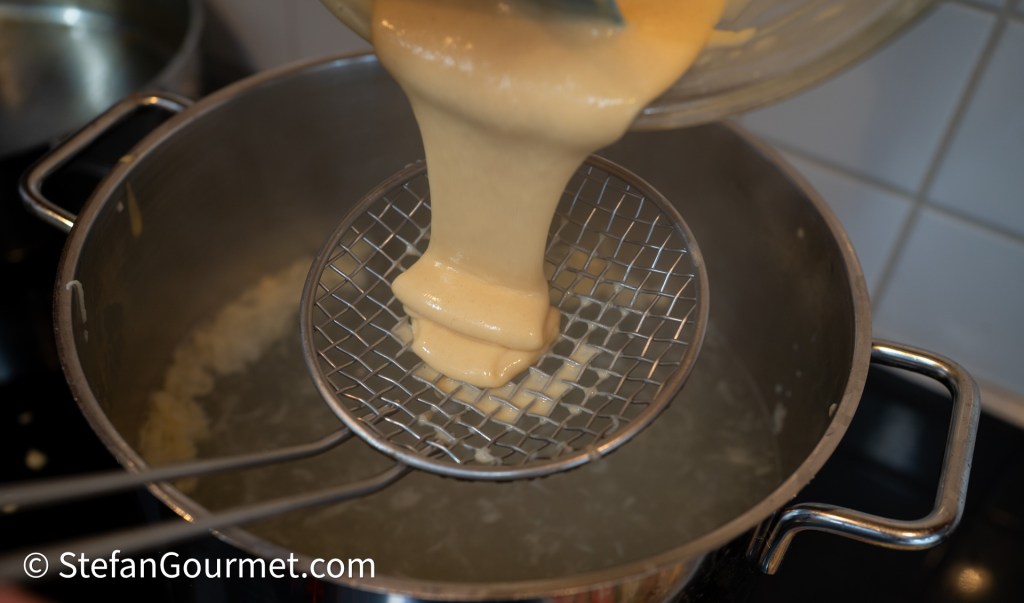
The recipe instructs you to pour the batter through a colander, but the holes in mine were too small. So, I used a strainer with larger holes instead.

Unfortunately, this didn’t yield well-formed girini and created quite a mess in the pot. I had to find another solution—which I did (see below).

I also found the batter a bit too thin. The recipe calls for 4 eggs and 150 grams of flour, but it doesn’t specify the size of the eggs. I suspect the intention was to use equal weights of eggs (without shells) and flour. That would result in a thicker, more manageable batter—better suited for forming girini.
In addition to girini, the chef is also known for his creative use of locally foraged greens. Of course, the wild greens found in Friuli in May aren’t available here, so I decided to use samphire (also known as sea asparagus) as a substitute. You could also use baby green asparagus or another type of green that adds a bit of crunch to the dish.
Instead of using rabbit fillet, I opted for rabbit legs. To ensure they were tender, I cooked them sous vide—while small pieces of fillet cook in seconds, leg meat can easily turn tough if not handled carefully. This method also gave me the added bonus of flavorful juices in the sous vide bag, along with the bones. Never one to waste flavor, I used the bones and juices to make a rich stock, which I then reduced into a deeply flavorful rabbit gravy. This added both depth and creaminess to the final dish.
I was very happy with the final result. It was unmistakably country cooking, yet carried an elegant refinement—a beautiful balance of rustic tradition and thoughtful technique.
Ingredients
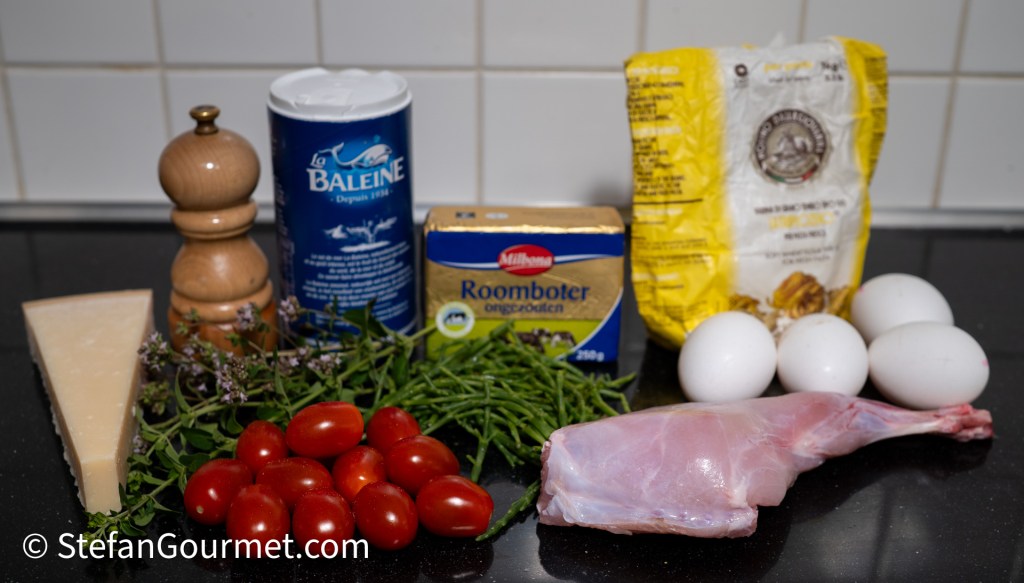
Serves 4 as primo piatto
- 2 rabbit legs, about 500 grams (1.1 lbs)
- 250 grams cherry tomatoes
- 125 grams samphire (or baby green asparagus)
- 70 grams (5 Tbsp) butter
- 4 sprigs of fresh oregano
- oregano flowers as garnish (optional)
- parmigiano reggiano flakes
- salt and freshly ground black pepper
- 4 eggs
- about 200 grams (1 1/3 cups) of Italian 00 flour
- for the stock: 1 carrot, 1 celery stick, 1/2 onion, chopped
Instructions

Season the rabbit legs with salt, vacuum seal them…

…and cook them sous vide for 8 hours at 74C/165F.
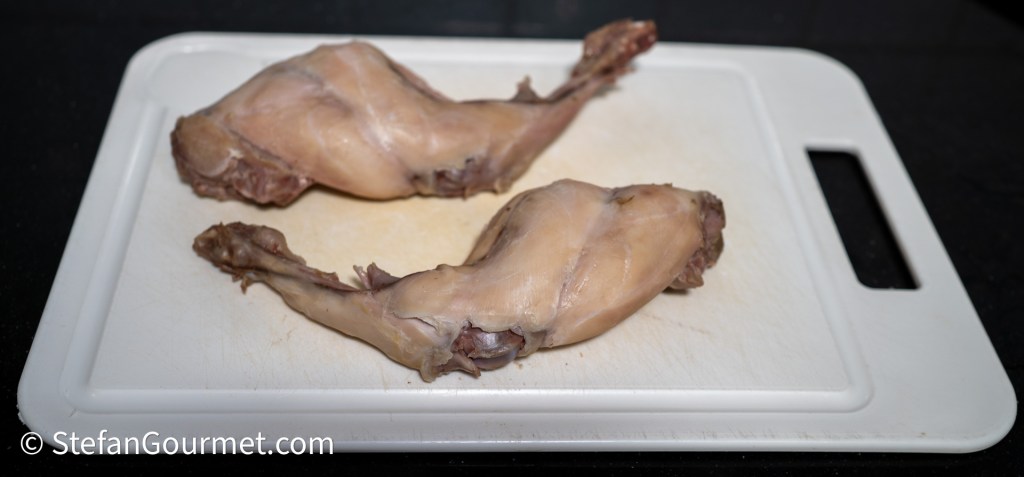
Pour the juices from the sous vide bag into a stock pot or pressure cooker, and set the rabbit legs aside to cool until they’re easy to handle.

Remove the meat from the bones—you can easily do this with your fingers, as the meat should fall right off. Set the bones aside to use for making the stock.

Chop the bones in half using a cleaver—this helps release the rich flavors from inside the bones, making your stock even more intense and aromatic.
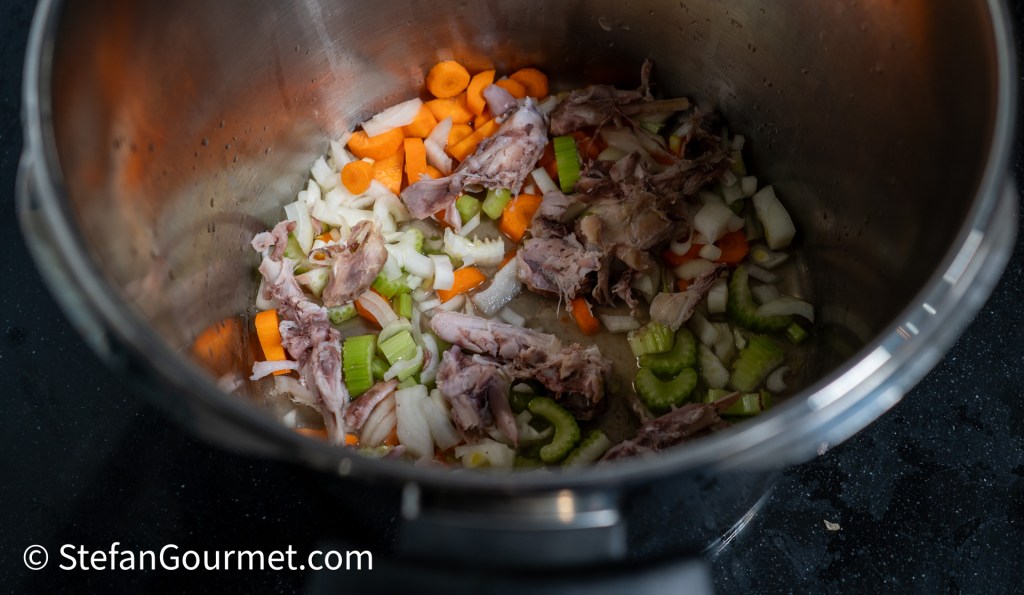
Place the chopped bones into a stock pot or pressure cooker, along with chopped carrot, celery, and onion.
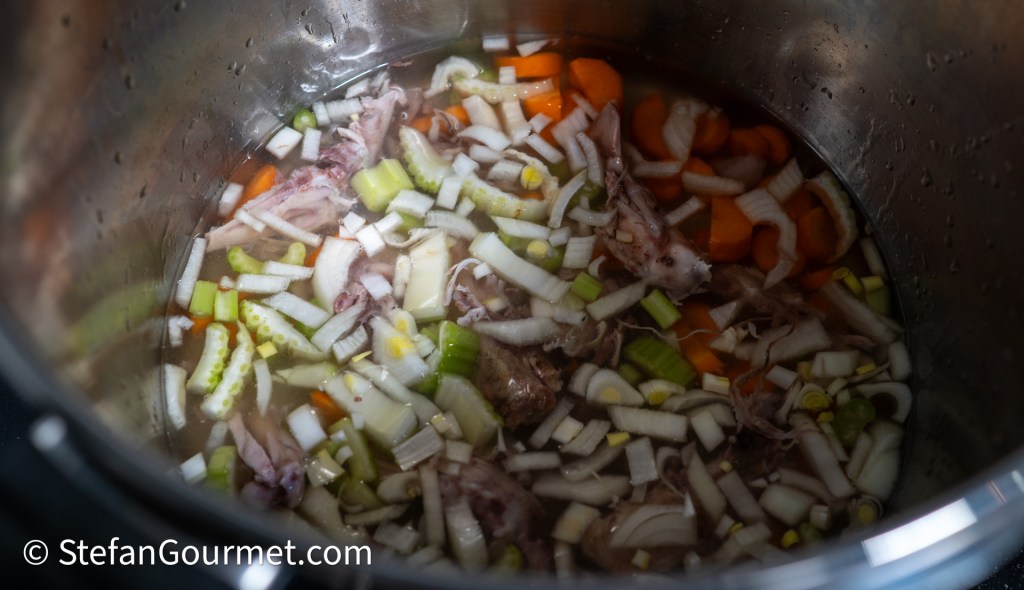
Add just enough water to barely cover the ingredients.
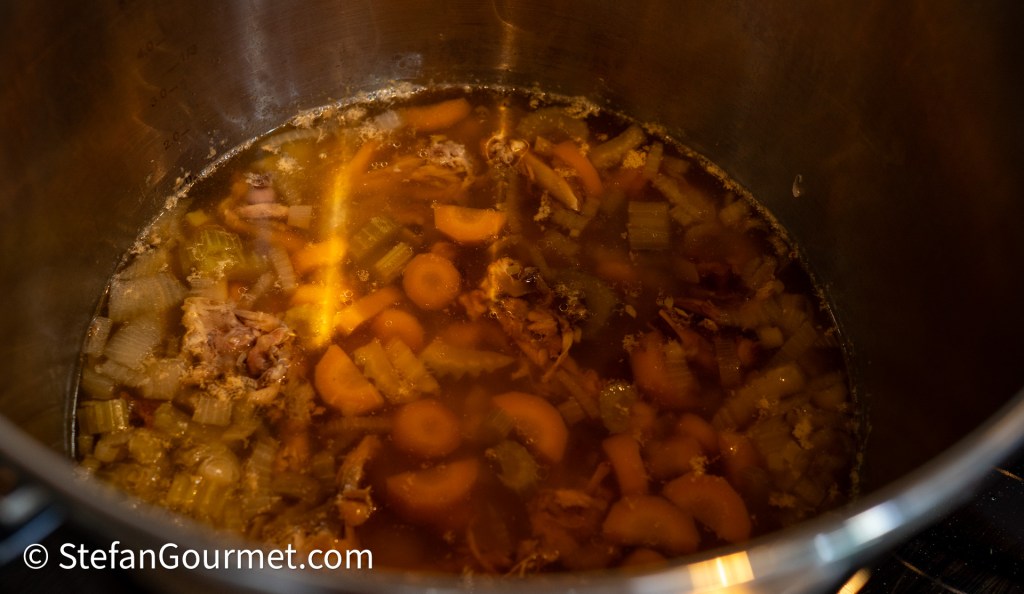
- If using a stock pot, cover, bring to a boil, then reduce to a simmer and cook for 3 hours.
- If using a pressure cooker, cover, bring to pressure, and cook for 90 minutes.
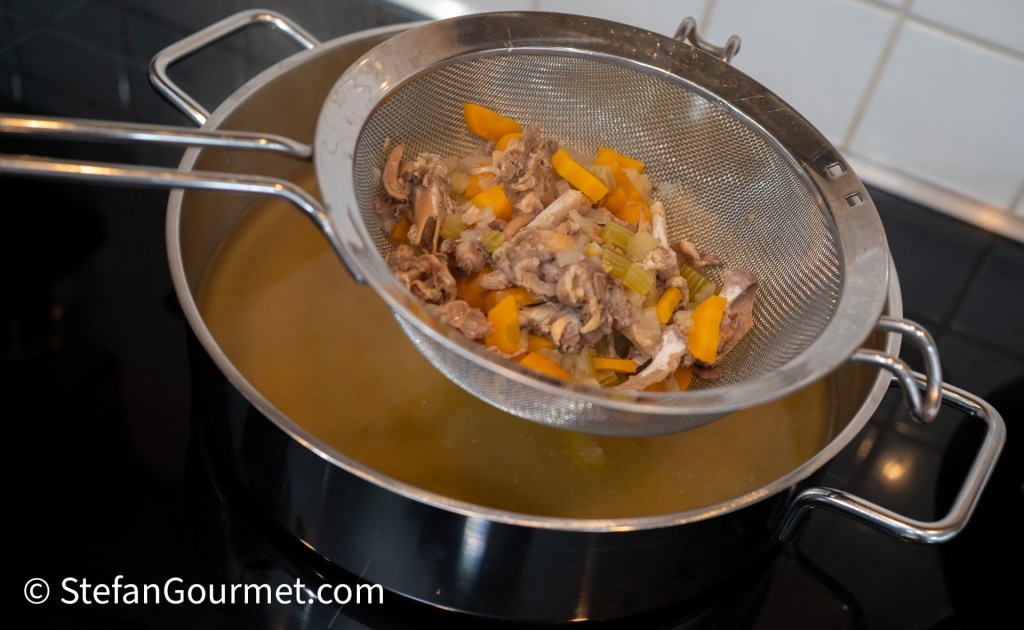
Sieve the stock using a fine sieve, and discard the solids.
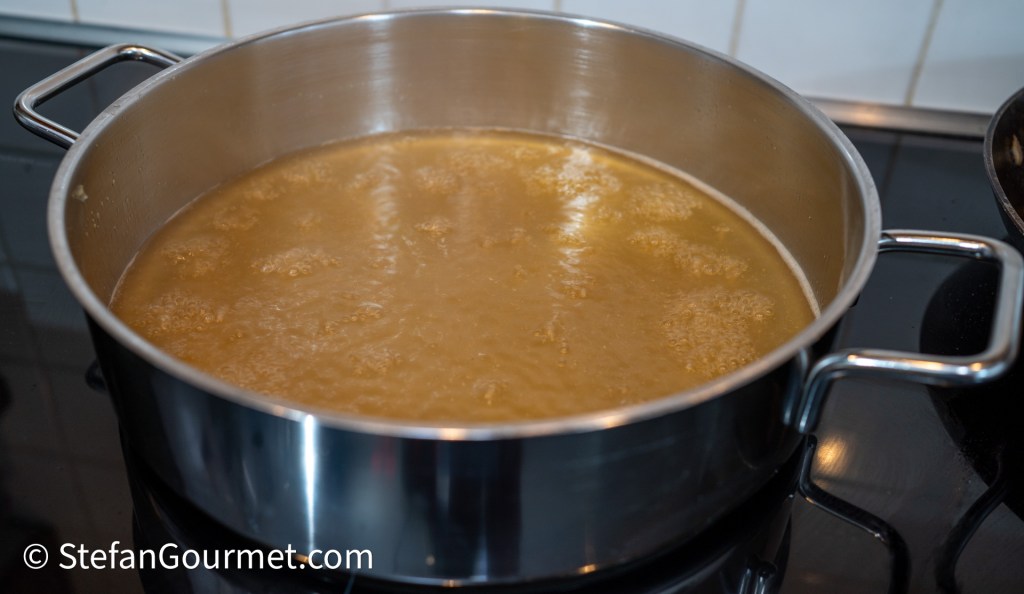
Strain the stock and pour it into a wide, shallow pan. Bring it to a boil, then reduce the heat to a simmer. Let it reduce, uncovered…
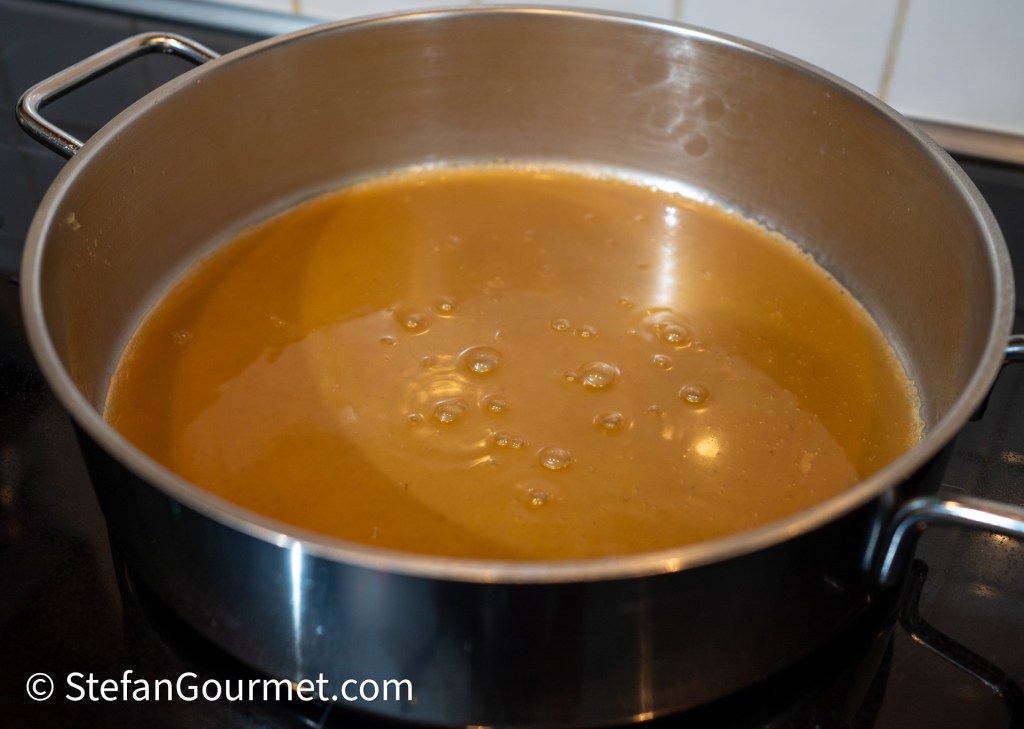
…until you’re left with about 120 ml (½ cup) of rich rabbit gravy.
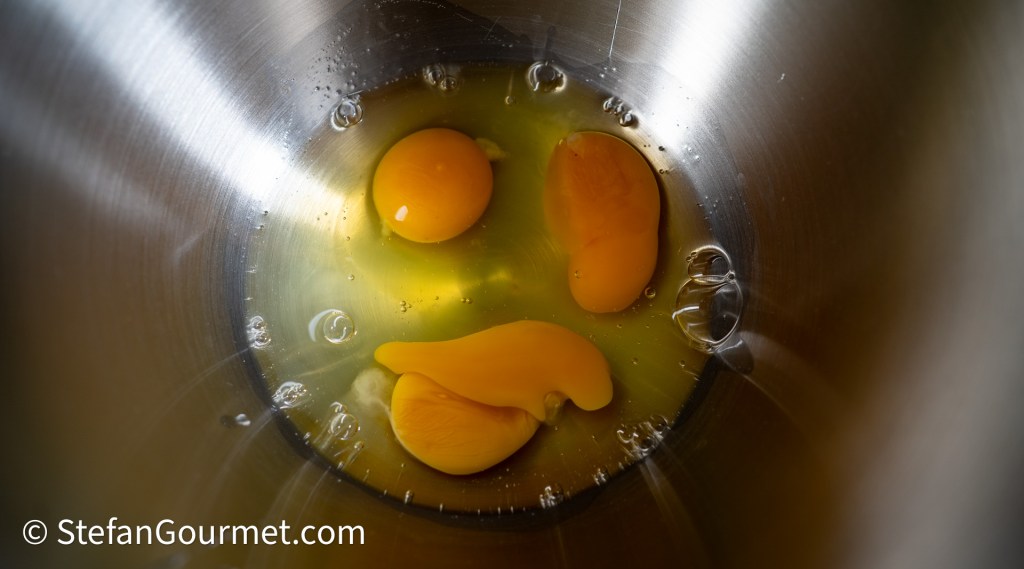
Meanwhile, prepare the girini batter. Crack 4 eggs into a bowl. If you’re aiming for a more precise consistency, weigh the eggs (without shells) and use an equal weight of flour—this helps ensure the batter isn’t too thin.

Beat the eggs using a hand whisk or a balloon whisk fitted to a stand mixer, until smooth and slightly frothy. Then let the batter rest for about 10 minutes to allow any air bubbles to dissipate. This will help the giriniform more cleanly when cooked.

Add 200 grams of sifted Italian 00 flour to the beaten eggs, or use the same weight of flour as the eggs for better consistency.
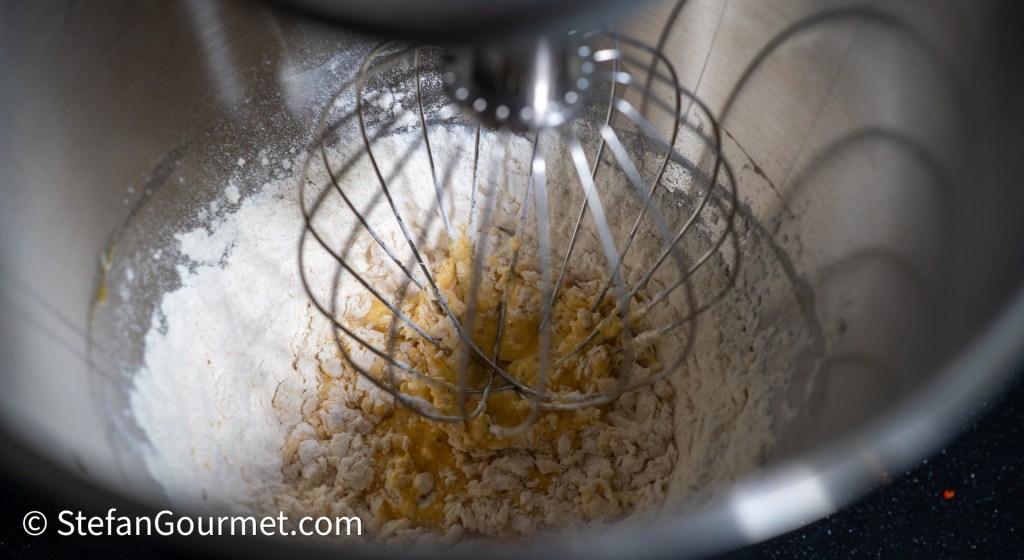
Beat…
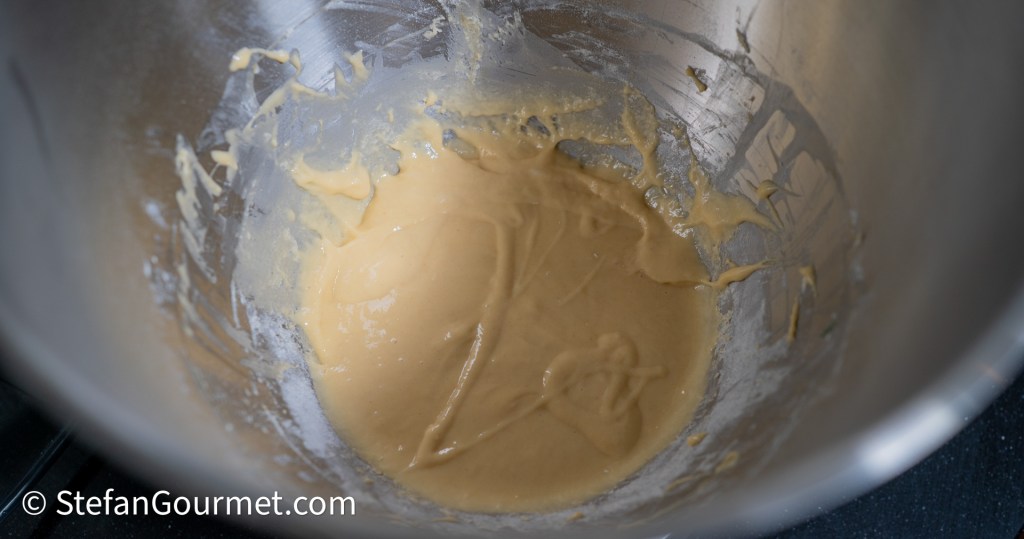
…until you have a smooth, lump-free batter.
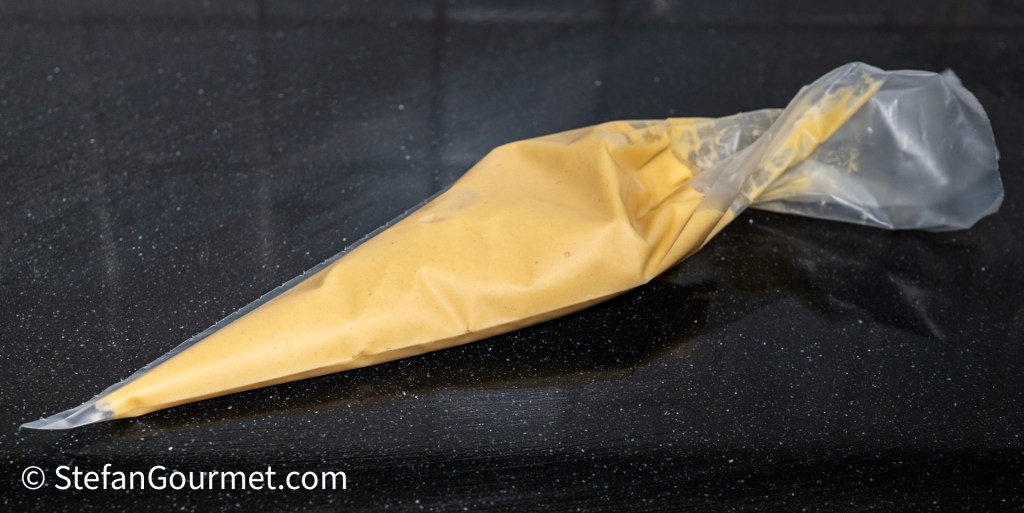
Transfer the batter into a piping bag and let it rest for about 15 minutes.
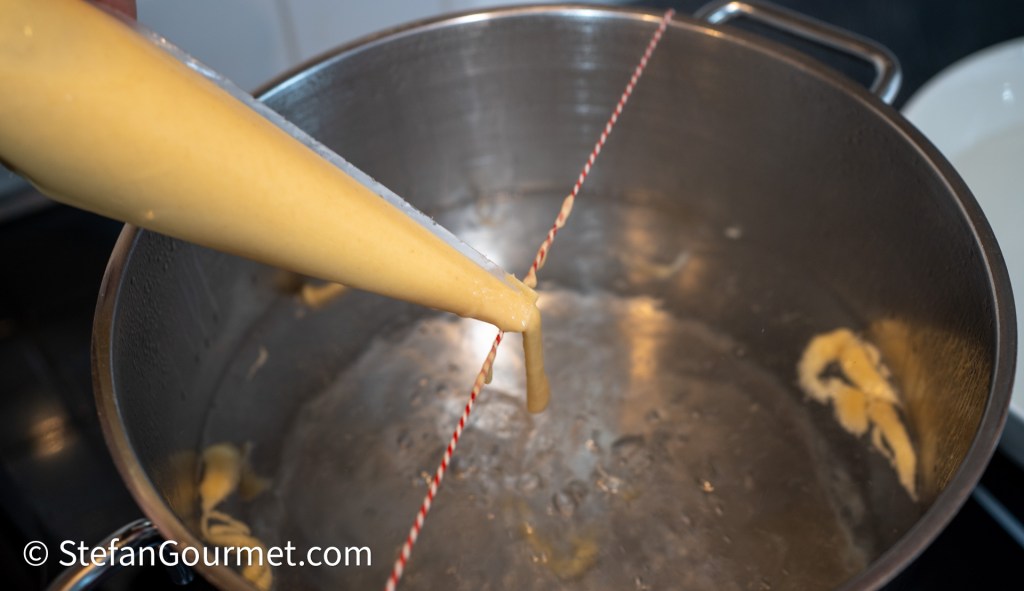
Meanwhile, tie a piece of kitchen twine tightly between the handles of a large pot. Fill the pot halfway with water, add salt, and bring it to a boil. Adjust the heat so the water maintains a steady but not overly vigorous boil. Place a large bowl of cold water next to the pot. Once the batter has rested, squeeze small drops of it from the piping bag, using the twine to cut them off so they fall into the boiling water.
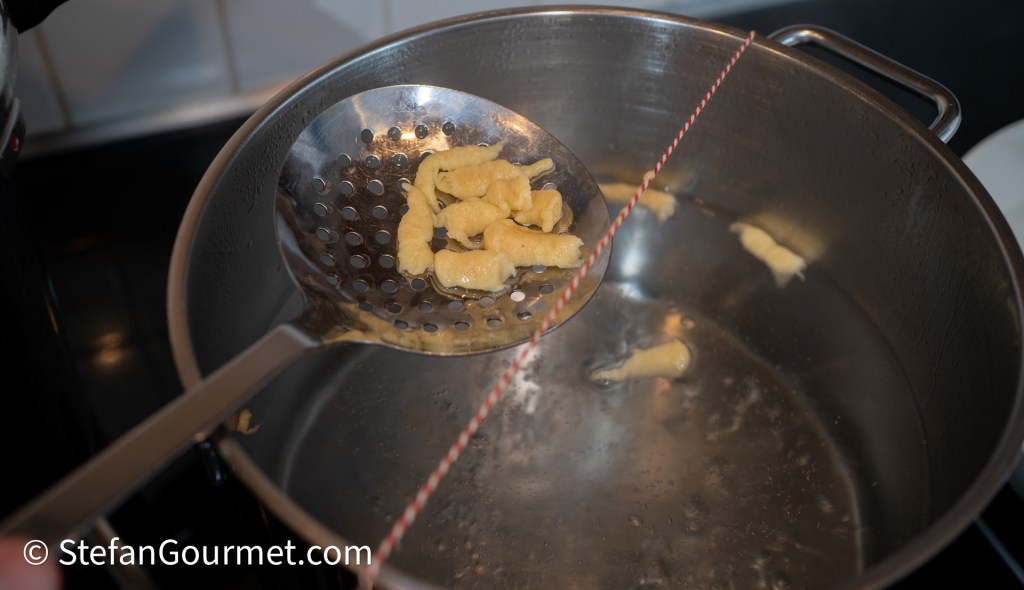
As soon as the girini float to the surface, scoop them out…
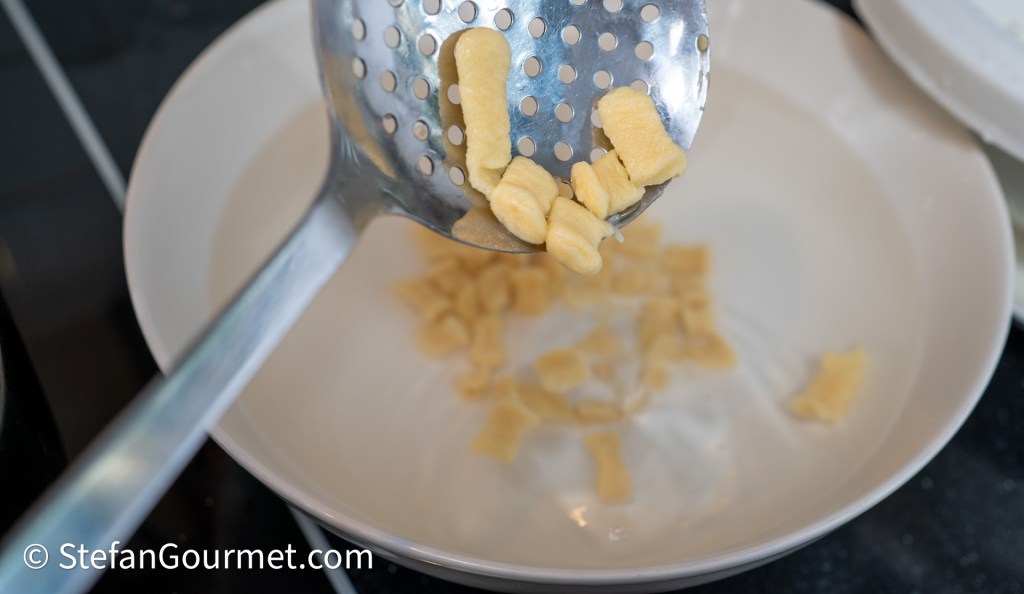
…and transfer them to the bowl of cold water to stop the cooking.

When all the batter has been used, drain the girini in a colander and set them aside until you’re ready to serve.

Chop the rabbit meat into bite-sized pieces and set aside. These will be gently reheated just before serving to preserve their tenderness.

Quarter the cherry tomatoes and set them aside. They’ll be added at the last moment to preserve their freshness and brightness.
Up to this point, everything can be prepared in advance. From here on, it only takes a couple of minutes to finish and serve the dish.
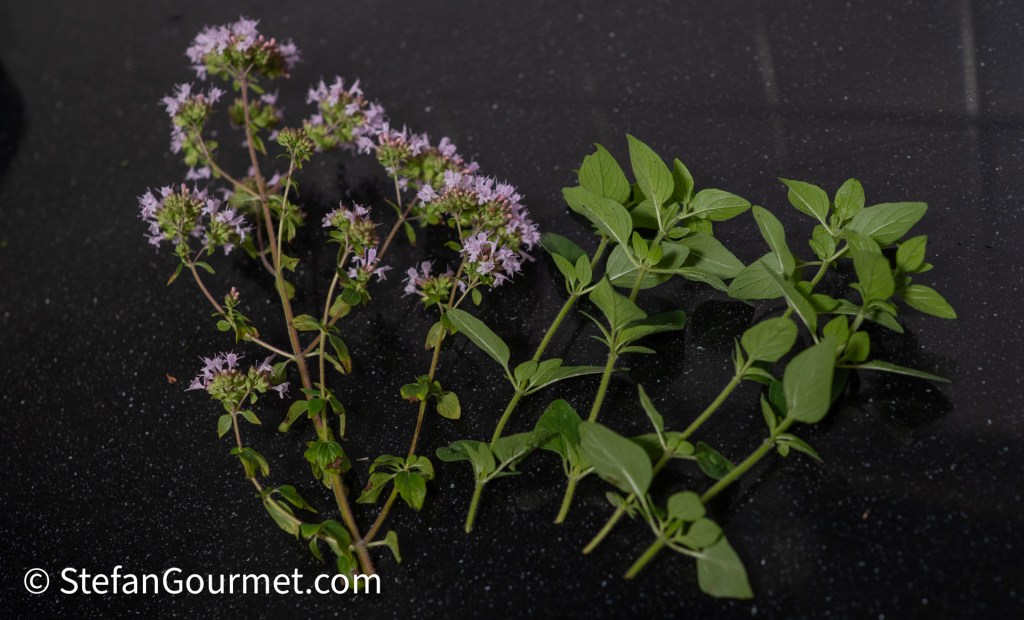
Pick the flowers and leaves off the oregano stems. Use only the tender parts, as they’ll add a fresh, aromatic note to the finished dish.
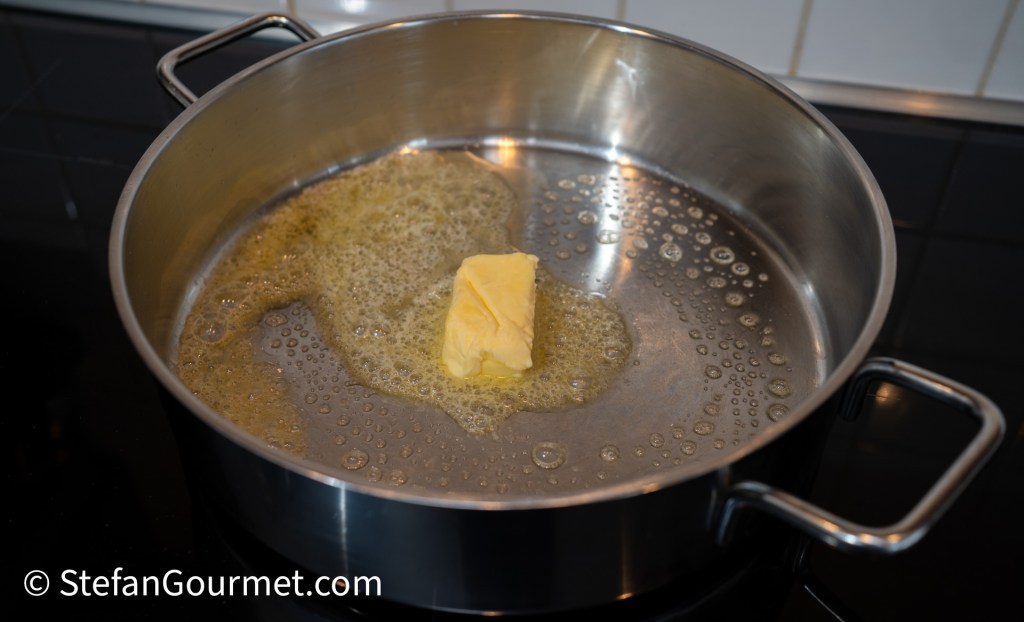
Melt 70 grams of butter in a large frying pan over medium heat.
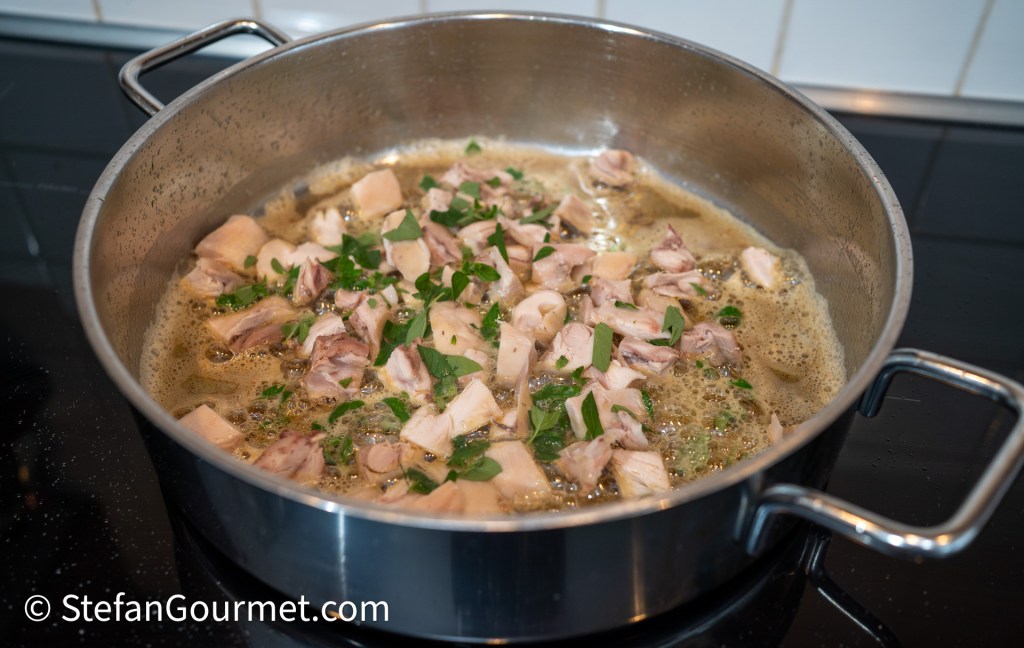
Add the chopped rabbit meat, oregano leaves…
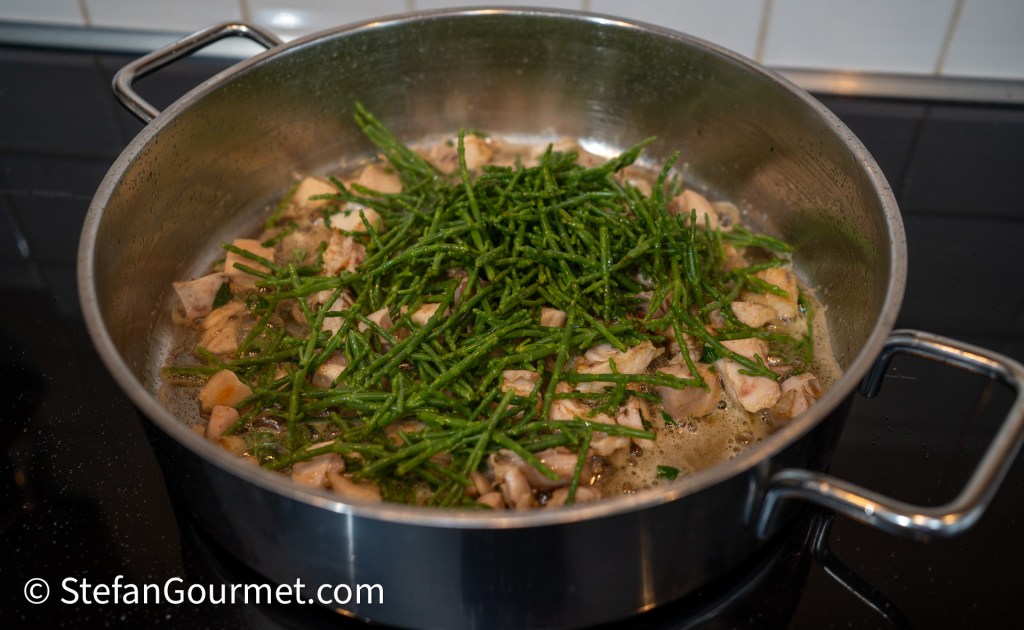
…and 125 grams of samphire.
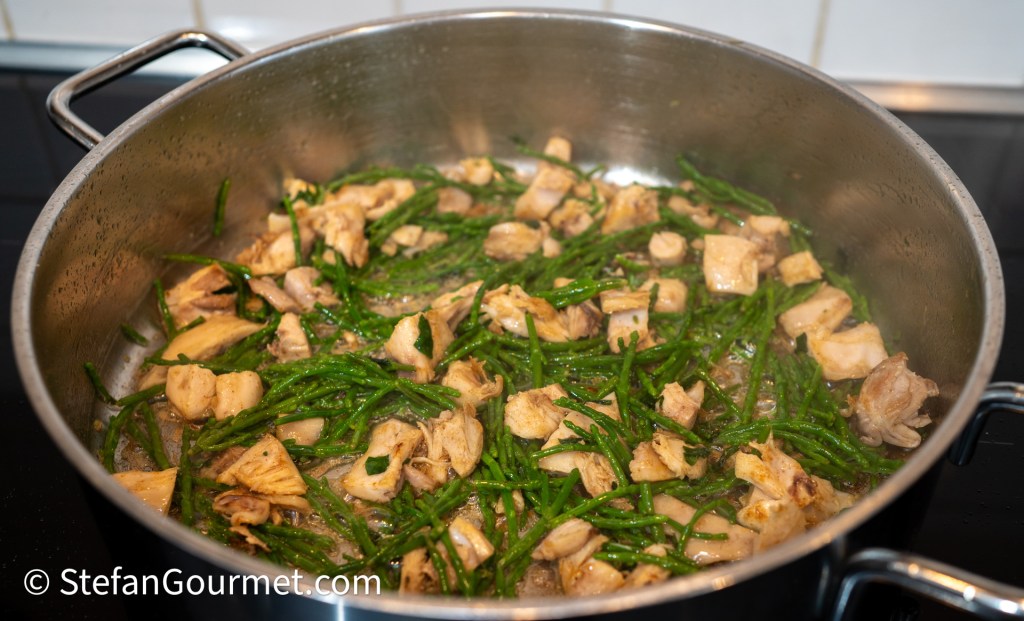
Stir gently for just a minute over medium heat.
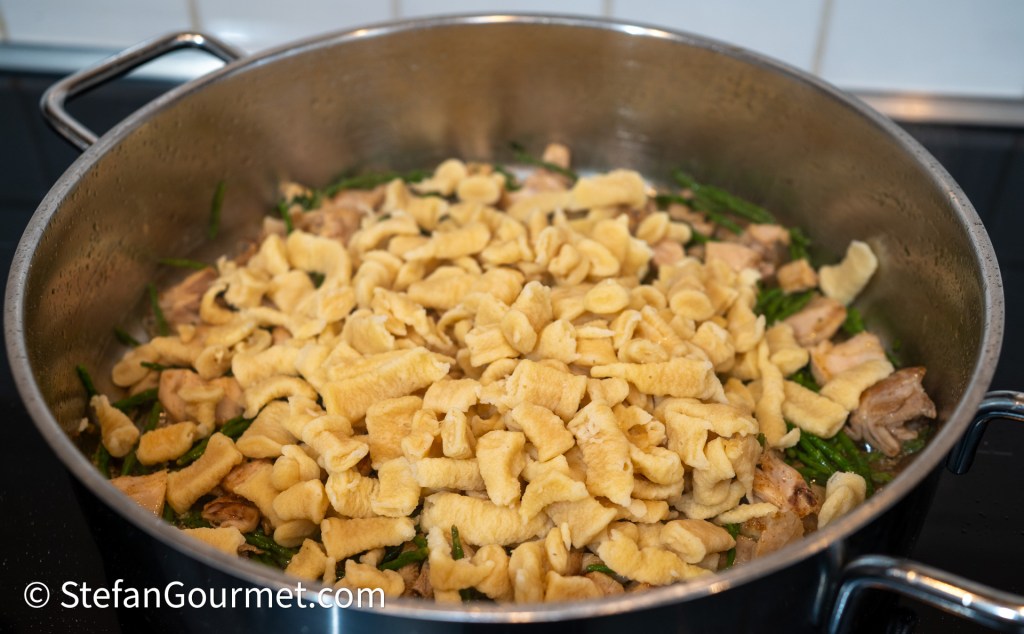
Add the girini, and stir for another minute.
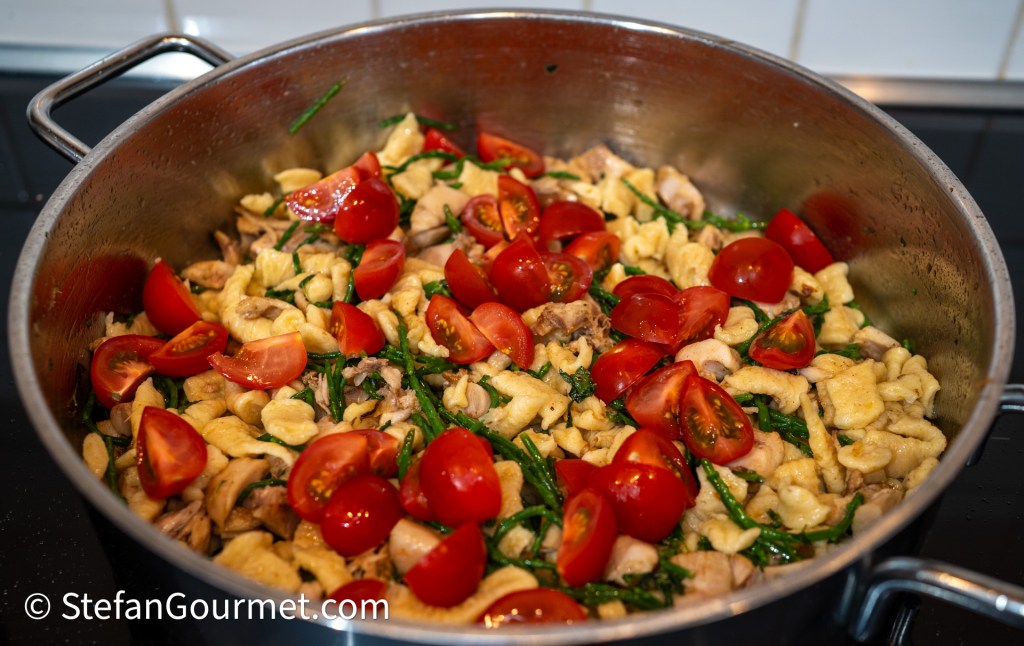
Add the cherry tomatoes…
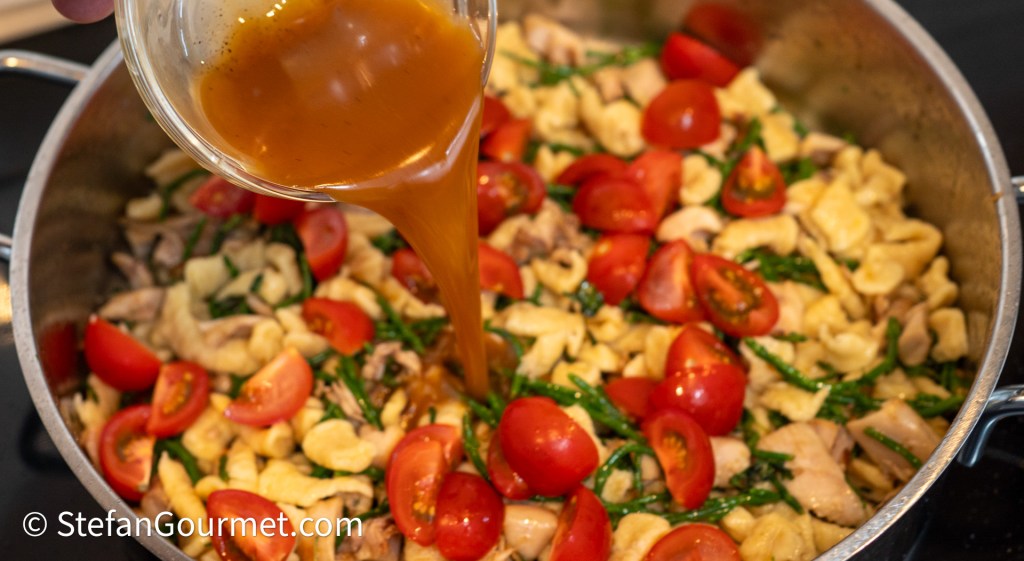
…and rabbit gravy.
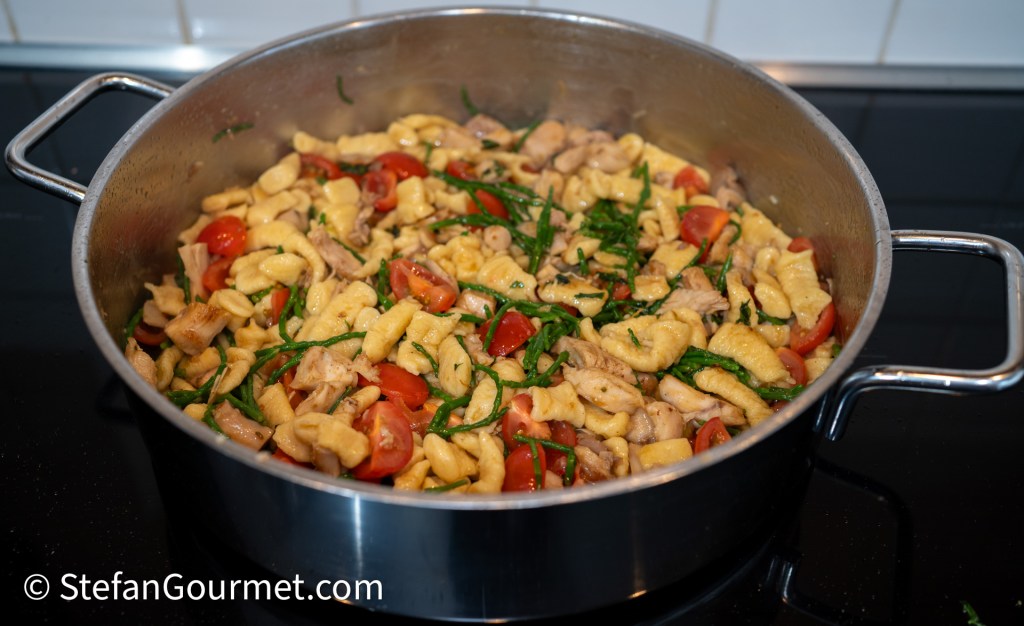
Stir gently for about a minute, just until everything is warmed through, the samphire is slightly tender but still crisp, and the cherry tomatoes have softened slightly without falling apart.

Serve immediately on preheated plates, garnished with flakes of Parmigiano Reggiano and oregano flowers, if using.
Wine pairing
This elegant dish calls for a wine that complements its delicate flavors without overpowering them. A light rosé—particularly one in the style of Provence—would be an excellent match, offering freshness and subtle fruitiness. A structured white wine can also work beautifully, as long as it doesn’t have dominant vanilla notes from new oak. A red wine is possible, but it may be challenging to find one light enough not to overshadow the dish’s subtlety.


Lovely dish Stefan and the twine idea is great! This is basically Spaetzle. No? Makes sense with where Fruili is located. I bet a Spaetzle maker would work great here. I’ll try that when I make this dish soon hopefully.
LikeLiked by 1 person
Yes it is very similar to Spaetzle, and you are also right that it makes sense from the geographical location. A Spaetzle maker would probably be easier than my twine. I have never prepared Spaetzle, but I believe the batter often includes water next to flour and eggs.
LikeLike
Love the pasta technique.
LikeLiked by 1 person
What an inviting-looking dish! I DO wish both rabbit and samphire would not be so difficult to get where I live! And yet the country is overburdened with the animals! Both Hungarian nokedli and csipetke come to mind looking at your girini – my Hungarian ex always made his thru’ the colander – perchance ours had bigger holes . . . perchance your ‘bits’ are somewhat bigger . . Am smiling – the oregano flowers do make the dish look ‘festive’ . . .
LikeLike